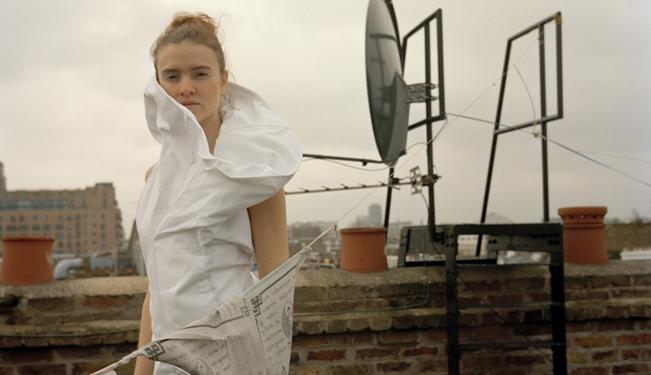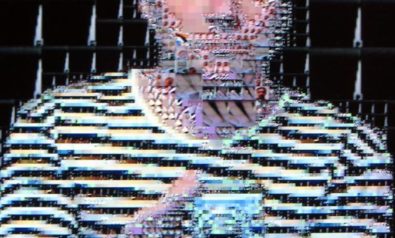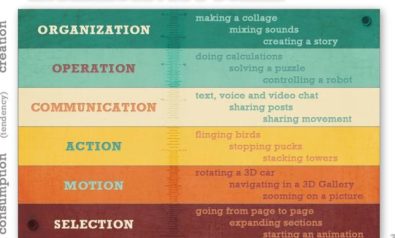On the extended notions of interactivity and art.
The Goal
Apart from informal communication with participants, I had never tried capturing the result of the audience’s interaction with my work. I focused more on the process-based interaction with the work in real time, and so the results of the interaction always stayed beyond the tangible field of the gallery-controlled environment. By undergoing direct experience with the work, the audience always takes away something that either slowly dissipates, leaving only a fleeting impression, or produces a deep impact. I am now more concerned with the latter, and with the nature of the 'impact' itself.
My work usually stays esoteric for the majority of the audience. There are multiple subjective interpretations when experiencing it. On the mental level, the artwork will create many interpretations and misinterpretations. On the energetic and emotional level however, I am concerned with the resonance and potential shifts in perception a work can cause.
The Approach
The focus of my work has been on exploring the dimensions of vision, and finding the point of intersection of the internal and external, the macro and micro levels of perception. Through the interaction of the physical space and immersive content, a 360°, pure, and non-dual view is made possible.
On the one hand, I was gradually approaching the idea of interaction between the artistic process, the artwork, and the audience. I draw only a very relative distinction between the artist and the audience: for me, both are participants in the same process of interacting with the work.
On the other hand, I started exploring the interaction between different levels of consciousness, which can manifest themselves in the actual work. The ‘108’ project deals with both types of interaction in a single photograph. This is created by superimposing several images. This series of artwork allows the viewer to switch between multiple levels of vision.
Maya, Perception, and Technology
The study of various materials, printing techniques, and spatial arrangements have led me explore technologies that transcend the conventional flatness of a picture on the wall. The ‘Okean X Forms’ project explores basic geometric forms and the great variety of constructions that can be built out of them. The most suitable technology available at the time was laser projection. It offered the audience a vast space for self-investigation through interaction with the artwork (the laser beam) as well as the possibility of being part of a multi-dimensional vision. The latter quality of this technology turned out to be particularly significant as I was working on the visual transformation of flat geometry, like a circle into 3D objects; a sphere. There was no object manipulation; all the interaction took place while the participants were walking through the space containing the shifting geometric light, and while observing their role in the art.
I have always been interested in techniques that offer the possibility of expanding perception. Tibetan Buddhism has the practice of “dark retreat”: a person retreats into a place without light or noise and observes the mind games “behind his eyes”. During this time he usually has numerous visions, which in Buddhism are considered to be the manifestation of Maya. In many Western sources, “Maya” is translated and interpreted as “illusion”. If we really examine the notion however, it turns out that the word “illusion” is too superficial to define Maya. I speak of Maya in terms of how our consciousness works, rather than of the state it is in. As Ananda Coomaraswamy puts it: “Maya is not properly delusion, but strictly speaking creative power, sakti, the principle of manifestation”.
This idea of accessing a multi-dimensional consciousness instead of staying in the linear reality, brings us to the field of perception. Is it enough to contemplate the bodily experience as being connected to the world we live in? As I see it, it is not possible to just dismiss the sensual realm; a method needs to be established that lets us embrace all senses, while helping us to understand where the invisible border between the real and the illusory lies. For me, this is something that works through observation and awareness.
In this exploration of the dimensions of reality, the use of technology offered new tools and languages to establish communication. The exploration of consciousness has shifted the notion of technology for me, allowing me to embrace both spiritual practices and the techniques of observation that use ‘optical’ devices and ‘optical’ events to reflect the former. Technology can become imbedded in the creative process itself, subsequently altering the ability of our vision, and questioning the limits of perception.
Holographics and Immersion
In 2007 I researched holographic projection technologies to create an immersive experience. I was looking at the possibilities of transforming the perception of space: physical, mental, and spiritual. A collaborative project, the ‘Manta Ray’ installation, was the result of this, and is concerned with the relationship between architecture, structure, and energy. It was inspired by the geometric form of ‘Vesica Piscis’ that is created within two intersecting spheres/circles, I have considered its aesthetic qualities, the uniqueness of its geometry, its long-running iconography in traditional art, as well as its symbolic meanings in relation to the feminine principle (the form of the womb), the organ of vision (the form of the eye), and sound (the form of the mouth, and the waveforms of sound frequencies).
The use of the Musion Eyeliner technology, designed to create a holographic effect (a realistic ‘illusion’ of an object floating freely in space), allowed a 3D visualization of a form in space. As opposed to the usual engagement of the viewer, who normally can only observe the object from outside, my idea was to submerge the viewer in the creative process. Using the idea of a ‘light drawing’, and integrating it with the principle of fractal growth, a single camera movement transformed the laser beam into a sculptural light, which changed shape according to the changing positions of the performer within the virtual space of the animation.
The shift of the viewpoint in relation to the object, presented an opportunity to experience the shift in perception of being inside/outside the system. The choreography of the movement strictly follows the geometry of the form navigating the reference points of the lightscape. This goes back to the idea of the illusiveness of the separation from the Source of Light, which is an integral part of the practice of non-dual vision in a philosophical context, hereby raising the question of the relationship between the light emitter, the light projection, and the light receptor.
The project was born and has developed through interaction. It was created in collaboration with Perseus Mandillo (3D artist) and Barbara Lambert (sound artist). The initial impulse was to open up a space in which collaboration would become possible, allowing a balance between freedom and control of the creative process. The idea of visualizing a form through vibration has brought about the concept of geometric sound, which has lead to experimentation with recordings of the vibrations of the human body and of the actual space where the installation takes place.
Collaborations
In 2010 I formed ‘Analema Group’, as the need to shape the collaboration process was growing. Working each time with a different team of people, the collective produced three projects — all dealt with the problems of space, visible and invisible interaction, and fields of perception.
One of the current collaborators within Analema Group, Mohammad Taha, talks about his idea of interaction and his experience: ‘Interactive art is a way of interaction between the artist and the art itself. The artist creates artwork that not only allows the other to see it or feel it, but also creates a connection between the audience and the art. My vision for the future is to create buildings and rooms, which react to the presence of people inside them; I envision creating a house called Haus der Gefühle (meaning ‘house of feelings’ in German).
Our first experimental collaboration, ‘Root A’ installation, was envisaged as a meditative room – where a state of meditation is facilitated through the use of new media. In this case, interaction is process-based and is discovered by each member of the audience through the observation of one’s own resonances with the meditative sound and spinning swastika fractal within an immersive setting of sound and light projection techniques.
Device-based Interaction
‘Khaos’ is the latest and the only example of ‘true’ device-based interaction, and in fact, our first experience in implementing the idea of gestural manipulation within a work. I have been researching various interaction techniques: gestural, brain interfaces, and sound trigger, to name but a few. ‘Khaos’ grew out of my recurrent idea of expressing energy movement (the concept that originates in energy-based practices, namely Qi-gong).
The performer transforms movement into light, by the 3D visualization of fractal manipulation. ‘Khaos’ is an investigation into the relationship between breathing, sound, movement, and energy-based practices, and their reflection in a live artistic stage experience. It aims to explore the notion of space as a field full of potential that can reveal itself through a succession of movements in a dance.
‘Khaos’ was presented at Kinetica Art Fair and won the MAMAs 2012 (Musion Academy Media Awards) award in the ‘Performance’ category.
Working on this project made me question technology in the first place, as I found it restrictive in terms of what we wanted to achieve. ‘Kinect’ technology (motion-sensing equipment), which we used for this project, is open and accessible in general, but when it comes to qualities such as the immersion of the performer in space, fluidity of interaction, and freedom of movement, it becomes a handicap rather than a mechanism for enhancing experience.
The Analema Group is currently trying to create a multi-layered interactive performance, where the audience will observe the infinite growth and depth of the multi-planar world. The piece will peer deeper into the hidden laws of fractal mathematics, complex algorithms, and their reflection in human existence as part of Nature’s process.
Support Fair Observer
We rely on your support for our independence, diversity and quality.
For more than 10 years, Fair Observer has been free, fair and independent. No billionaire owns us, no advertisers control us. We are a reader-supported nonprofit. Unlike many other publications, we keep our content free for readers regardless of where they live or whether they can afford to pay. We have no paywalls and no ads.
In the post-truth era of fake news, echo chambers and filter bubbles, we publish a plurality of perspectives from around the world. Anyone can publish with us, but everyone goes through a rigorous editorial process. So, you get fact-checked, well-reasoned content instead of noise.
We publish 2,500+ voices from 90+ countries. We also conduct education and training programs
on subjects ranging from digital media and journalism to writing and critical thinking. This
doesn’t come cheap. Servers, editors, trainers and web developers cost
money.
Please consider supporting us on a regular basis as a recurring donor or a
sustaining member.
Will you support FO’s journalism?
We rely on your support for our independence, diversity and quality.








Comment